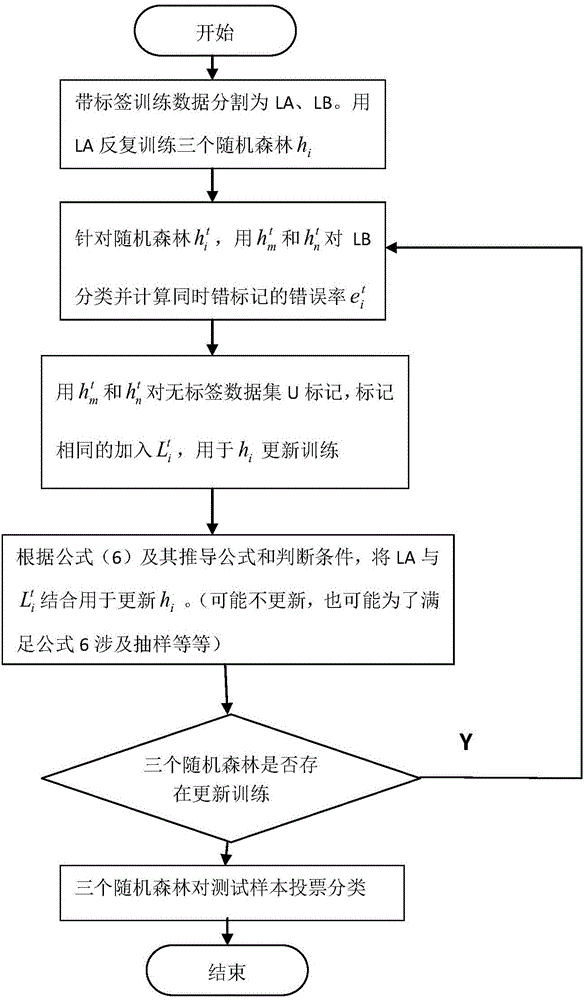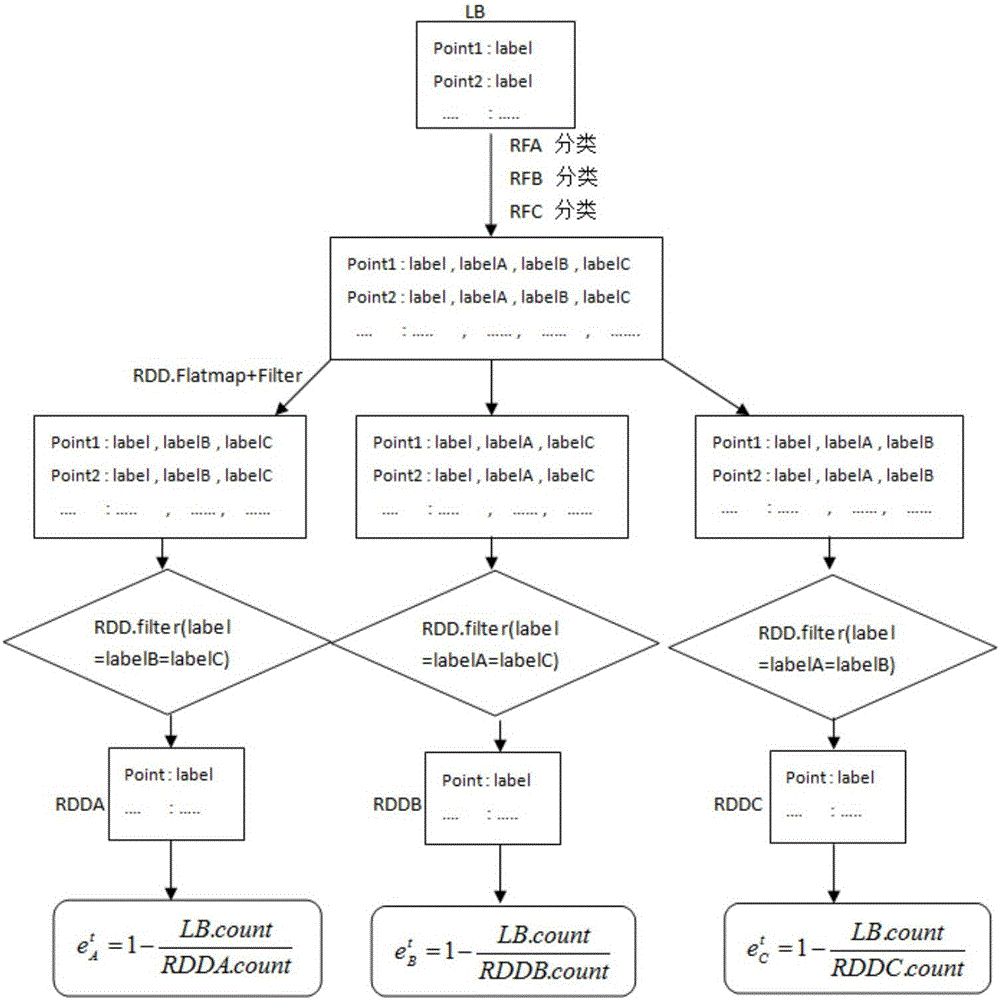Semi-supervised random forests classification method based on Spark
A technique of random forest classification and random forest, which is applied in the field of machine learning classification algorithms, can solve problems such as the lack of training samples, the unusable classification model, and large sample data.
- Summary
- Abstract
- Description
- Claims
- Application Information
AI Technical Summary
Problems solved by technology
Method used
Image
Examples
Embodiment 1
[0037] The specific principles of the Spark-based semi-supervised random forest classification method provided by the present invention are as follows:
[0038] According to Angluin and Laird's paper noise learning, if the training set size is m, the noise is η, the error rate is ε, and c is a constant. Then the relationship is satisfied:
[0039] m = c ϵ 2 ( 1 - 2 η ) 2 - - - ( 1 )
[0040] To simplify the calculation, it is necessary to calculate the quotient of the constant c and the square of the error rate.
[0041] μ = c ϵ 2 ...
PUM
 Login to View More
Login to View More Abstract
Description
Claims
Application Information
 Login to View More
Login to View More - R&D
- Intellectual Property
- Life Sciences
- Materials
- Tech Scout
- Unparalleled Data Quality
- Higher Quality Content
- 60% Fewer Hallucinations
Browse by: Latest US Patents, China's latest patents, Technical Efficacy Thesaurus, Application Domain, Technology Topic, Popular Technical Reports.
© 2025 PatSnap. All rights reserved.Legal|Privacy policy|Modern Slavery Act Transparency Statement|Sitemap|About US| Contact US: help@patsnap.com



